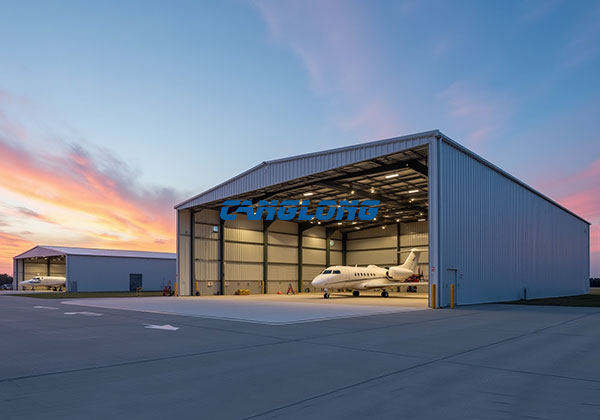Prefab Aircraft Hangar
| Product Parameter | |
|---|---|
| Place of Origin: | Henan, China (Mainland) |
| Standard: | GB Standard, EU Standard, ASTM Standard |
| Certificates: | CE, ISO9001 |
| Grade: | Q235/Q355 |
| Brand Name: | Canglong Group |
| Type: | Steel Structure |
| Surface Treatment: | Antirust painted & Hot dip galvanized |
| Columns and Beams: | H-section Steel |
| Purlin: | C/Z Shape Steel Channel |
| Roof and Wall Panel: | Sandwich Panel, Color Steel Sheet |
Product Detail
A prefab aircraft hangar is a versatile, cost-effective, and rapidly deployable structure designed to provide secure shelter for aircraft storage, maintenance, and operations. Engineered with modular components and advanced materials, these hangars combine durability with flexibility, making them an ideal solution for aviation facilities across industries.
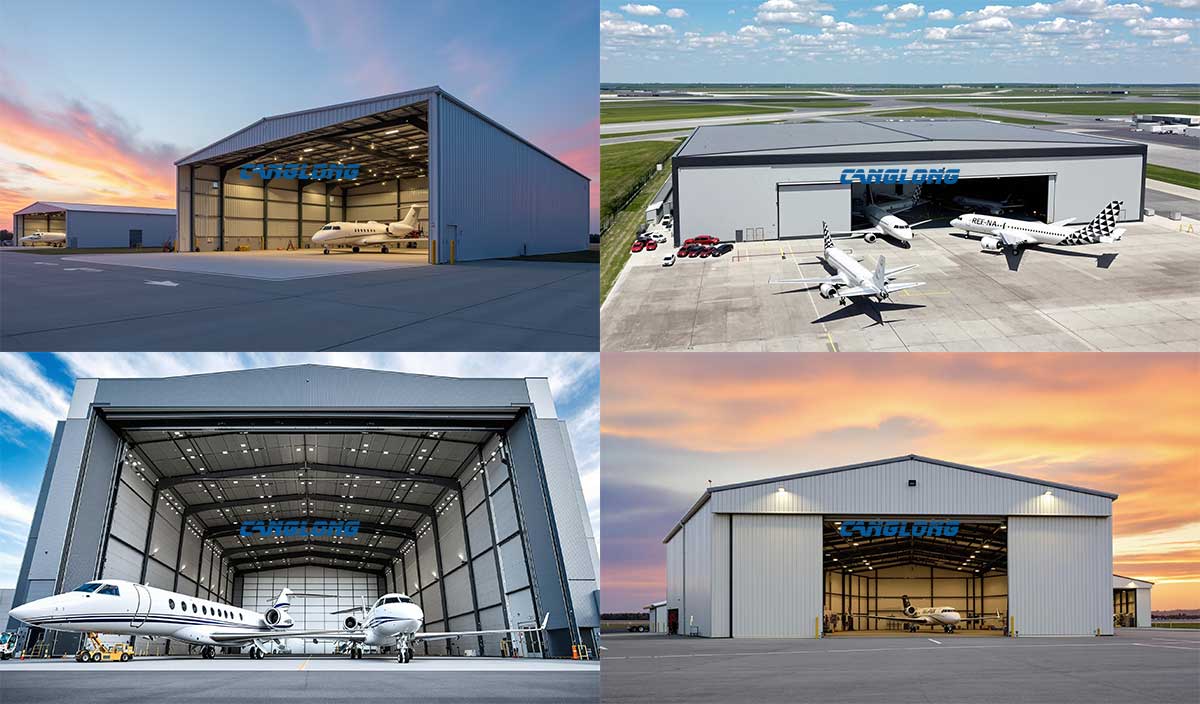
Structural Composition
Primary Framework:
The core structure consists of high-strength galvanized steel or aluminum alloy columns, beams, and trusses. These components are precision-engineered for load-bearing capacity, ensuring resistance to wind, snow, and seismic forces.
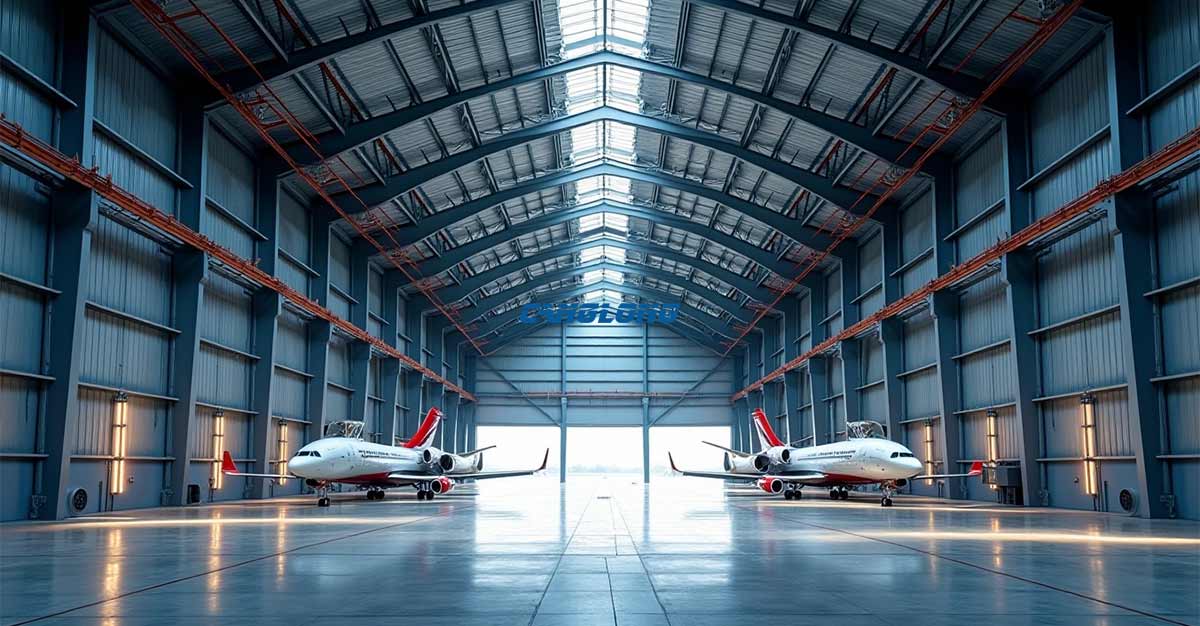
Cladding System:
Walls and roofs are typically constructed from corrosion-resistant materials such as corrugated metal panels, composite sandwich panels, or insulated PVC fabric. Options include fire-retardant coatings or thermal insulation layers for climate control.

Aircraft Access Doors:
Customizable door systems include sliding, bi-fold, or hydraulic doors, tailored to accommodate aircraft size (e.g., small private planes to large commercial jets). Automated door systems with remote control are available for efficiency.
Foundation:
Designed for adaptability, foundations range from simple concrete slabs to screw piles or ground anchors, enabling installation on uneven terrain or temporary sites.
Optional Add-Ons:
- Ventilation systems
- Lighting and electrical wiring
- Fire suppression systems
- Internal partitions for workshops or storage
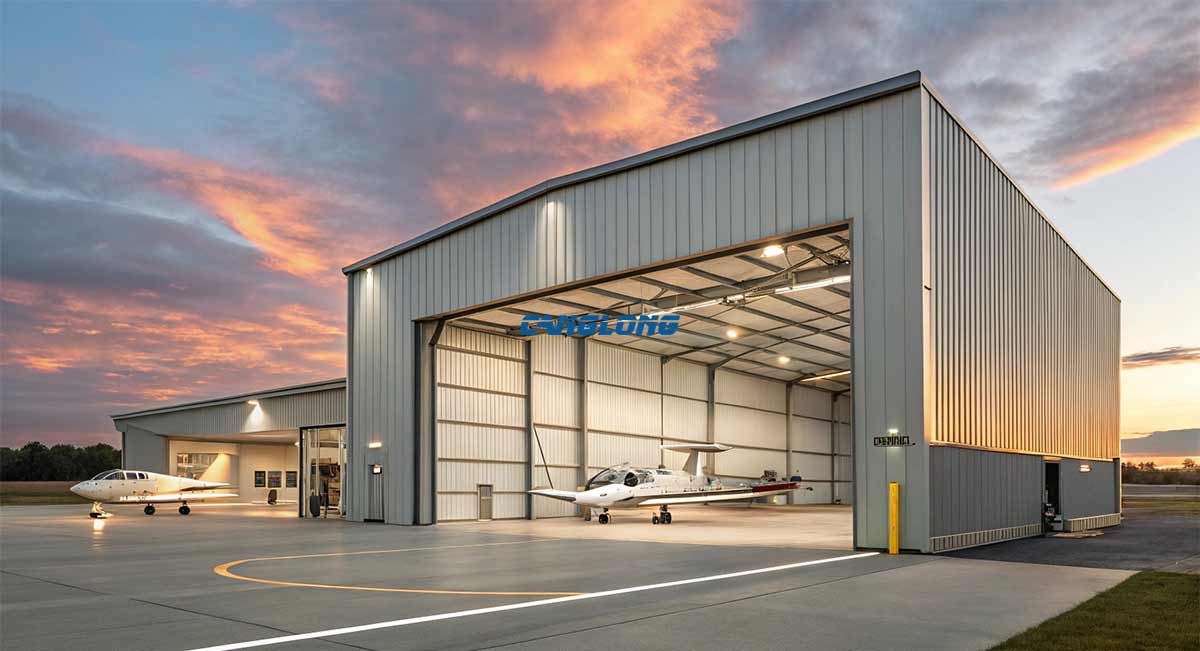
Key Features
- Rapid Installation: Prefabricated components are factory-made and delivered ready for assembly, reducing on-site construction time by up to 60% compared to traditional builds.
- Modular Scalability: Structures can be easily expanded or reconfigured to meet evolving needs, such as adding extra bays or height.
- Durability: High-quality materials and anti-corrosion treatments ensure longevity in harsh environments, including coastal or extreme-temperature regions.
- Cost Efficiency: Lower labor and material waste translate to significant savings without compromising structural integrity.
- Portability: Some models are designed for disassembly and relocation, ideal for temporary military bases or disaster response scenarios.
Advantages Over Conventional Hangars
Time Savings: Eliminate lengthy construction timelines—projects can be completed in weeks instead of months.
Budget-Friendly: Reduced construction and maintenance costs make prefab hangars accessible to private owners, small airports, and startups.
Customization: Tailor dimensions, door types, and interior layouts to specific aircraft models or operational workflows.
Low Maintenance: Materials like galvanized steel and UV-resistant cladding minimize upkeep requirements.
Eco-Conscious Design: Modular construction generates less waste, and energy-efficient insulation options reduce carbon footprints.
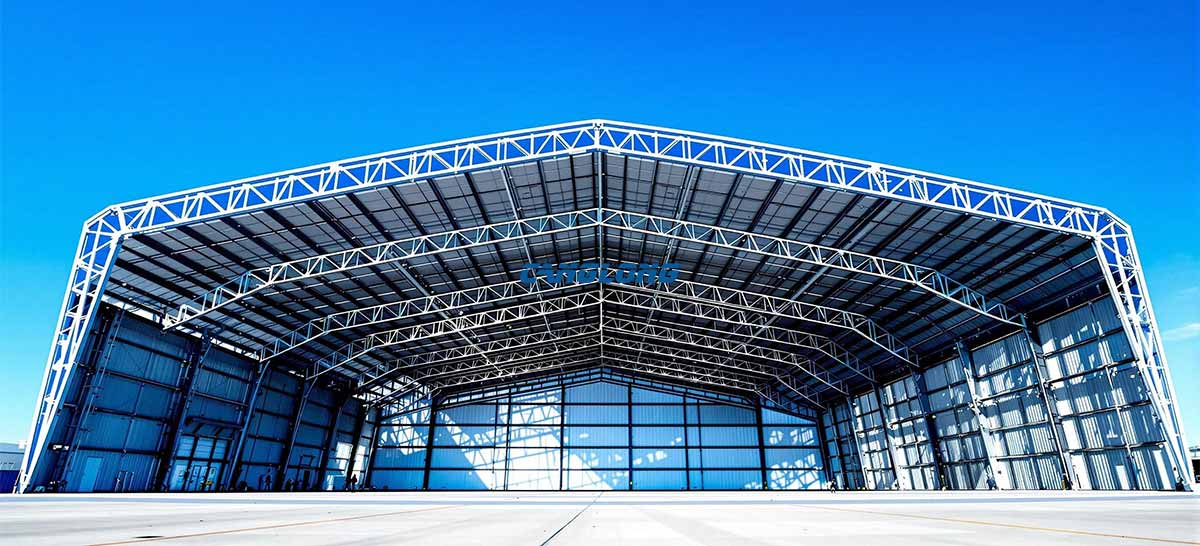
Applications of prefab aircraft hangar
Prefab aircraft hangars serve diverse sectors:
- Commercial Aviation: Storage and maintenance hubs for airlines, charter services, and cargo operators.
- Military & Defense: Rapid-deployment hangars for airbases or remote operations.
- Private Aviation: Secure storage for personal planes, helicopters, or vintage aircraft collections.
- Emergency Services: Shelter for medical evacuation helicopters or disaster relief aircraft.
- Agriculture: Housing for crop-dusting planes or drones.
- Research & Training: Facilities for aviation schools or experimental aircraft development.

Conclusion
A prefab aircraft hangar offers a blend of practicality, resilience, and adaptability, addressing the dynamic needs of modern aviation. Whether for permanent installations or temporary deployments, its streamlined construction process and customizable design ensure a reliable, future-proof solution for safeguarding valuable aircraft assets. By choosing prefab technology, operators invest not just in a structure, but in operational efficiency and long-term value.
